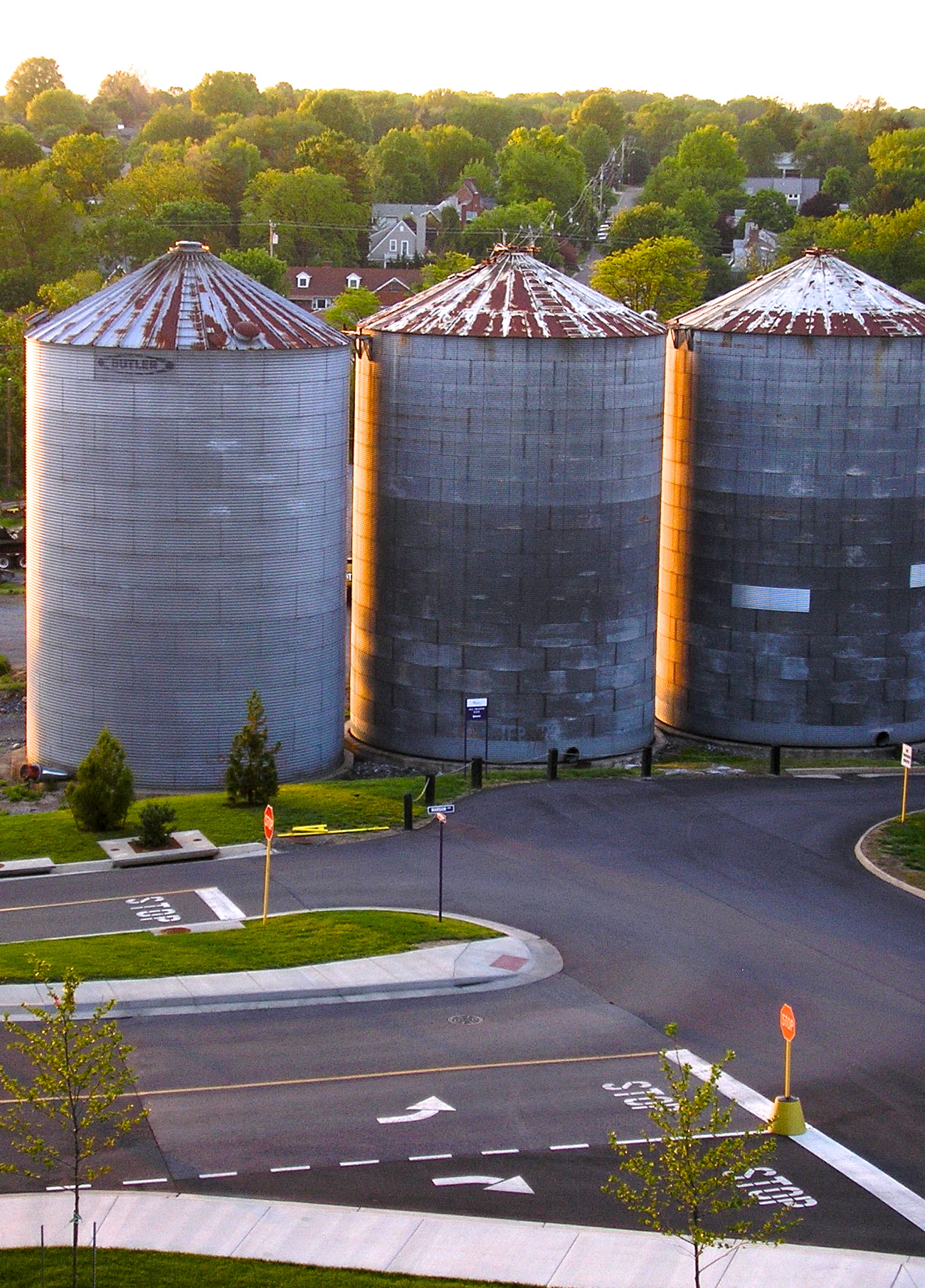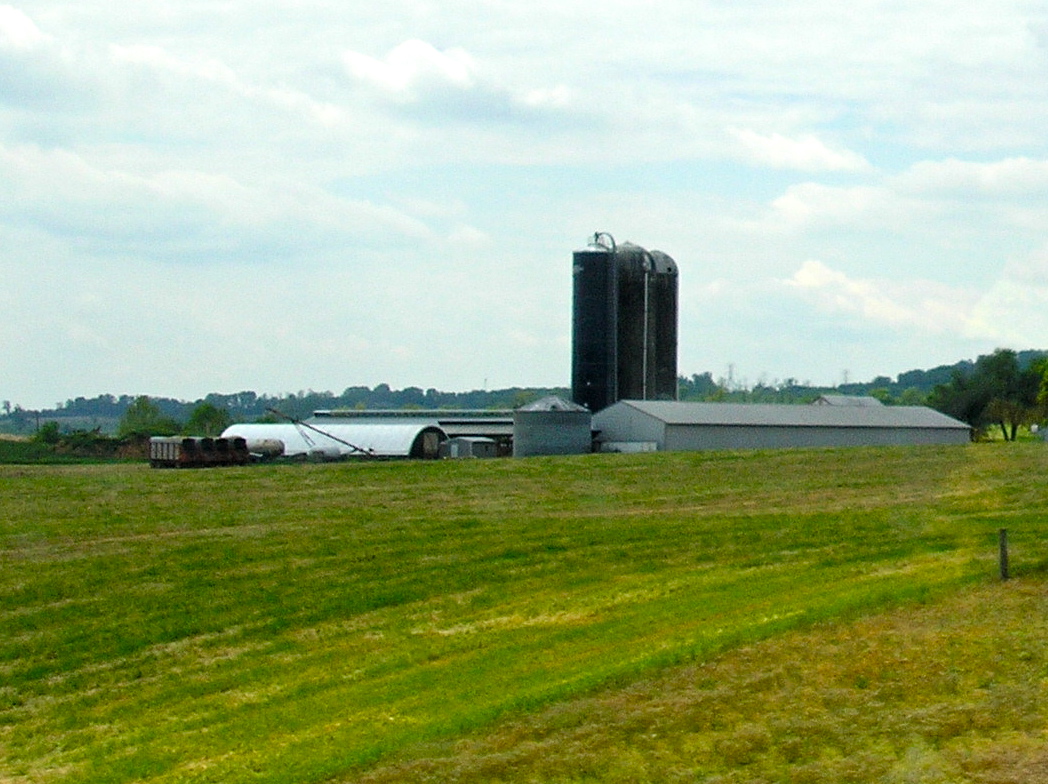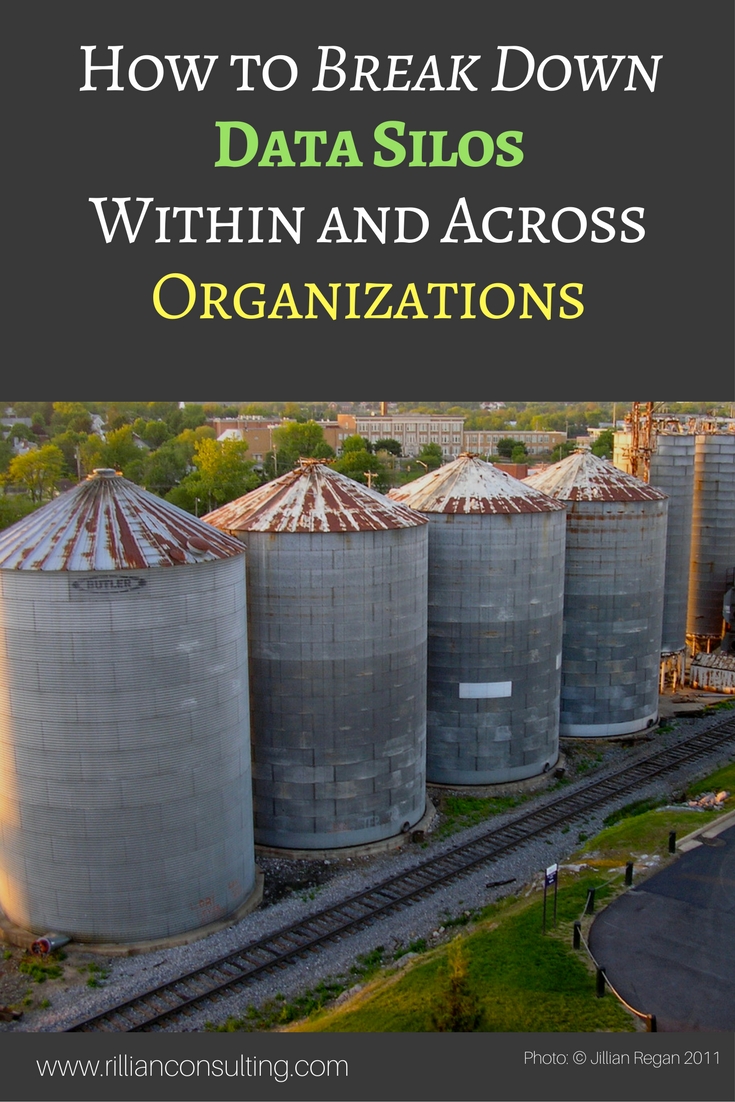
Silos in Harrisonburg, VA. Photo: © Jillian Regan 2011
In the information age, organizations and departments within organizations often encounter the problem of data existing in silos, where one department or organization cannot easily access data that they need for a project from another department or organization. This can lead to inefficiencies, such as having to stop a project and use time and resources just to retrieve the data needed before the project could continue.
Keep in Mind the Goals for the Data Project
It is important to keep in mind the organization’s problem or goal which the data project needs to measure or address.(1) Focus on that first instead of seeing what data may already be available. While it could be more time and resource intensive, the goal of the project may require new data to be collected because there is not existing data that meets the needs of the project.
Support from the Top and From All Involved
The executive team should be supporting and leading the effort as well as involving the managers of each department.(1) Also, staff involved in all levels of data collection, data entry, and data analysis should be aware of and involved to some degree in the organization’s effort to reduce data silos. Other staff who may not be directly involved in inputting the data should also be made aware of and engaged to some degree in the process of reducing data silos.
Make a New Framework for Data Collection
After breaking down silos, or when collecting new data, make a plan or framework for how the data can be integrated for all the stakeholders so that new data silos are not created.(2) For example instead of separate data files being stored on separate computers, have a shared drive that can be accessed by those who need access to that data across departments or organizations. (3)
Training and Relationship Building
Enhancing knowledge of other’s data needs and increasing trust between people from different departments or organizations is key to breaking down data silos and improving data sharing.
Workshops and learning lunch events are one way to do this. These bring people together to learn about what other departments, organizations, or projects needs, as well as create an atmosphere where people can connect with one another and improve their working relationships. (3)
Documentation is Key
Keep track of data sources, i.e. where the data came from. This is vital to understanding the data. This will also make it easier to know where to go to get updated data as needed. It is also essential to do when having teams of people working on the data project, so that everyone will be on the same page.
Have a system for keeping track of the person or persons to reach out to for specific data and their contact information who may be in a different department, on a different team, or from another organization.

Silos on a farm in Virginia Photo © Jillian Regan 2011
Examples of Breaking Down Data Silos:
Breaking Down Data Silos Across Different Research Topic Areas
A recent study included a collaboration with multiple sectors: researchers, a children’s hospital, and a police department to use sources of data–spatial video and geographic information systems (GIS)–that was able to provide insights into two different research topic areas–active school transport (AST) and child injury research– in which the data was usually siloed in different research projects.(4)
State Government Initiative for Open Data Portal
The state government of Virginia (in the United States) has an initiative of creating an open data portal, Data VA, of non-sensitive, public information that is made freely available for public use in an easily readable format.(5) At Datapalooza 2017, Virginia Secretary of Health and Human Resources, Bill Hazel, spoke about the need for the different sectors of state government to need to go horizontally across sectors in order to best be able to serve people because no one person whom they serve only fits into only one of the sectors. (6) He also spoke about the need for ethical use of data for a public purpose.

Silos in Harrisonburg, VA. Photo © Jillian Regan 2011
Conclusion
Breaking down data silos can allow organizations or departments within organizations to access data that will provide valuable insights into their organizations. This article presented a few ways in which to do this.
I’d love to hear from you about your ideas! Has your organization or department had success in breaking down data silos? What are some of the ways in which they were able to do this?
Sources:
- Wilder-James, E. Breaking Down Data Silos. Harvard Business Review. December 5, 2016. https://hbr.org/2016/12/breaking-down-data-silos
- Goh, G. The Danger of Data Silos, Part 3: How To Bring Them Down. Bedrock Data Blog. 2017. https://www.bedrockdata.com/blog/the-danger-of-data-silos-part-3-how-to-bring-them-down
- 5 Ways To Avoid Project Data Silos. Ten Six Consulting. June 4, 2014. https://tensix.com/2014/06/5-ways-to-avoid-project-data-silos/
- Schuch L, Curtis JW, Curtis A, Hudson C, Wuensch H, Sampsell M, Wiles E, Infantino M4, Davis AJ. Breaking Out of Surveillance Silos: Integrative Geospatial Data Collection for Child Injury Risk and Active School Transport. J Urban Health. 2016 Feb;93(1):36-52. doi: 10.1007/s11524-015-0006-9. Retrieved from https://www.ncbi.nlm.nih.gov/pmc/articles/PMC4794455/
- Data VA: Virginia Open Data Source Portal. 2017. https://data.virginia.gov/
- Hazel, B. Introduction to UVA Data Science Research Highlights Presentations at Datapalooza 2017. November 10, 2017; Charlottesville, VA.
